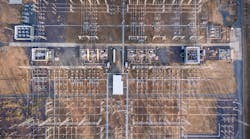As more and more companies recognize that replacement of substation equipment with digital technology is a very sensible decision today when upgrading facilities or replacing equipment at end of life, the issue of the local area network (LAN) design appears as one of the first issues engineers must address as they design/redesign their facilities.
As one might expect any time technical issues are posed to an array of experts, LAN designers and equipment manufacturers have a fairly broad range of opinions concerning the best design to use and when variations might be appropriate. When considering the LAN topology and questions regarding physical separation of networks where Sampled Values, GOOSE, MMS data are transferred, experts addressing the subject point to three considerations: 1) the technical requirements of the system such as performance, reliability objectives and regulatory requirements; 2) economic factors such as acceptable cost to the customer; and 3) organizational factors such as workforce availability and training.
The basic LAN architecture types frequently cited by experts are the radial and point-to-point structures. The radial structure is a fully redundant circuit with network switches in the center and at the peripheral IED devices. This design allows use of the Parallel Redundancy Protocol (PRP). The point-to-point structure provides a direct optical connection between devices that some consider to be more fail-safe because it avoids networking with Ethernet switches.
Another viewpoint is that ‘point-to-point’ architecture is always the way to go for implementation of the process bus, because it has the highest reliability, which is a core purpose of the process bus. One provider argues that separation into the station bus (MMS, GOOSE) and the process bus (SV, GOOSE) is unavoidable with the point-to-point architecture.
A third argument is that the architecture for the station and process buses should be based on the primary scheme, the switchgear type and arrangement of facilities such as the control room and local control cabinets. Separation of the process bus and the station bus may be on the basis of the substation function (transmission, distribution tie-station) as opposed to the LAN architecture.
Additional considerations regarding digital substation LAN architecture, separation of networks, differences based on substation type, approaches based on voltage and other factors are commented upon by a group of designers and equipment providers in a great article produced by Digital Substation.
As we continue to integrate digital substation technology on our systems to meet more complex grid demands and improve the function, reliability, testing and maintenance of our substations, there will be technical, economic and people issues to solve. This is particularly true for our transmission and distribution infrastructure where we have literally billions of dollars invested and billions of dollars needed to upgrade our systems. We know there will be legacy components on our systems for many years and for a time, we will have to work with and around this equipment. It is reassuring to know we have experts like the individuals quoted in the above article to help us work through the issues.


